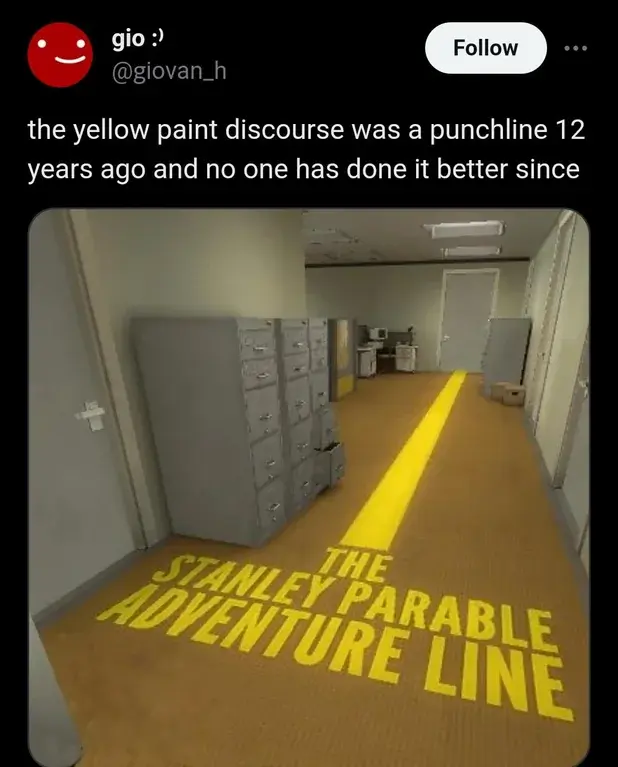this post was submitted on 12 Feb 2024
116 points (100.0% liked)
games
20527 readers
363 users here now
Tabletop, DnD, board games, and minecraft. Also Animal Crossing.
-
3rd International Volunteer Brigade (Hexbear gaming discord)
Rules
- No racism, sexism, ableism, homophobia, or transphobia. Don't care if it's ironic don't post comments or content like that here.
- Mark spoilers
- No bad mouthing sonic games here :no-copyright:
- No gamers allowed :soviet-huff:
- No squabbling or petty arguments here. Remember to disengage and respect others choice to do so when an argument gets too much
founded 4 years ago
MODERATORS
you are viewing a single comment's thread
view the rest of the comments
view the rest of the comments

Do people really not like the yellow paint? I remember when I started seeing it in games I was grateful I no longer had to make wild guesses about which part of a monotone wall was programmed to allow me to climb it. I don't want to have to wander around an area confused and frustrated because I didn't notice the one arbitrarily chosen stack of crates that looks like every other stack of crates that will let me get to the next part of the level. The yellow paint is necessary when level designers start getting too cute about immersive details that don't allow any interaction. If you're designing a linear path in an open environment, you need to do something to indicate the linear path. It's the inevitable result of filling games with insurmountable waist-high fences and unbreakable doors and straight up invisible walls.
The yellow paint is only really necessary in the event they aren't given enough a time in the design phase. If everything works correctly, you should be drawn towards the correct way to go by visual cues. Having the yellow paint means it's not necessary to indicate with those visual cues which make for a less planned out environment. It is at best a crutch so that game designers can focus on more important things. It should not be seen as an end to itself.
This breaks down for lots of open-world games, although the linear dungeons can absolutely still be done without the line.